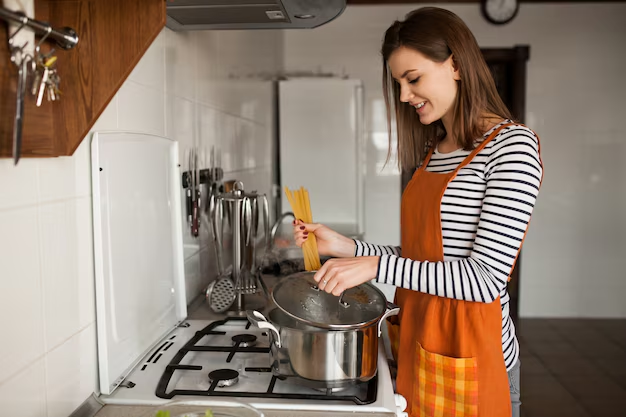Is Putting Hot Food in the Refrigerator Safe?
Imagine the scenario: you've just finished a delightful meal, and there's plenty of delicious food left over. You're tired, and the last thing you want is a mess or food poisoning issue in a couple of days. So, you bundle up your hot leftovers and head towards the refrigerator. But wait! The question lingers: Is it safe to put hot food in the refrigerator, or should you let it cool down first? It's a topic that causes confusion and debate, and today, we'll dive into it headfirst, exploring what experts and common practices suggest.
Why the Concern?
Understanding the basis of this debate boils down to three main concerns: food safety, energy efficiency, and potential damage to your fridge. Each factor has its own set of implications that influence the way we handle our leftovers.
Food Safety
One of the biggest motivations for correctly managing hot food storage is maintaining food safety. Incorrect cooling can lead to the growth of bacteria, most notably bacteria like salmonella or E. coli, which flourish in what's known as the "danger zone" — temperatures between 40°F and 140°F (4°C and 60°C). Cooling food quickly through this danger zone can significantly reduce the risk of bacterial growth.
Energy Efficiency
Refrigerators are designed to maintain a stable internal temperature to keep food fresh. Introducing hot items can force your fridge to work harder, as they release heat inside, raising the overall internal temperature until they're cold. This extra energy demand can potentially increase your electricity bill.
Potential Damage to the Fridge
Concerns about damaging a fridge stem from the idea that the appliance needs to expend more energy than usual to bring hot items down to a safe storing temperature. In extreme cases, frequent exposure to hot items might strain the appliance's compressor, leading to premature wear.
A Balanced Perspective
Cooling Down Food Safely
Experts generally agree on the importance of cooling food down safely to avoid the rapid growth of bacteria. Here are a few methods to help you navigate cooling safely:
- Break It Down: If you've cooked a large batch of food, consider separating it into smaller, shallow containers. This exposes more surface area, allowing food to cool faster.
- Ice Baths: For super-speedy cooling, place containers of hot food in an ice water bath, stirring occasionally. This can significantly shorten the time food spends in the danger zone.
- Room Temperature: If practical, allow food to sit at room temperature for up to two hours before refrigerating, but be mindful of the specific conditions and temperatures of your kitchen environment.
Refrigeration Tips
When choosing to refrigerate hot food, consider these key strategies to minimize impact:
- Timing and Monitoring: If your room conditions permit, allow food a brief cooling window outside the fridge to prevent the internal air temperature from rising too much.
- Optimal Stacking: Ensure you've provided adequate airflow around containers in the fridge, promoting even cooling.
- Internal Temperature Control: Keep a vigilant watch over the fridge's internal temperature, aiming to stay below 40°F (4°C) at all times, even with hot items stored.
Cleaning and Maintenance
Maintaining your refrigerator is another step towards alleviating concerns associated with hot food storage:
- Check Seals and Vents: Regularly inspect door seals for cracks or wear. Any faulty seals can lead to energy inefficiency, especially if you're frequently cooling hot items.
- Ventilation: Ensure your fridge's vents are unobstructed to promote a consistent internal temperature.
- Frequent Clean-Outs: Clear expired or unnecessary items to ensure optimal airflow within your fridge.
Related Subtopics to Explore
Naturally, this primary question can extend into various related topics of interest, which further inform and empower consumers in their kitchen practices.
Storing Leftovers and Meal Prepping
With the growing trend of meal prepping for efficiency and health, understanding the best practices for storing and reheating pre-prepared meals is invaluable. Meal prep containers, type of storage (glass vs. plastic), and reheating methods all intersect with the issue of hot foods in the refrigerator.
Modern Refrigerators and Technology
Delving into advancements within refrigerator technology provides insights into how newer models handle variable temperatures and increased storage loads more efficiently. Features like smart fridges or adaptable temperature zones can mitigate some traditional concerns with cooling hot items.
Energy Conservation Tips
As sustainability becomes a priority, energy conservation strategies are critical. Strategies like strategically loading your fridge, adjusting temperature settings seasonally, and conducting regular maintenance checks can align well with kitchen practices.
Summary: Practical Tips for Storing Hot Food in the Fridge
Here are some practical tips to guide you in the art of storing hot food in the fridge effectively:
- 🥶 Chill Wisely: Cool food for a brief time at room temperature but never exceed two hours to ensure food safety.
- 🥣 Divvy It Up: Store in smaller, shallow containers to promote rapid cooling.
- ❄️ Ice It Down: Use an ice water bath for quick cooling of large batches.
- 📊 Track Thermostat Levels: Monitor and maintain your fridge’s temperature below 40°F.
- 🌬️ Air Flow: Organize your fridge so air can circulate freely around containers.
By embracing these practices, you strike a balance between food safety, appliance efficiency, and energy use. It's an approach that ultimately empowers you to keep your kitchen running smoothly while ensuring the well-being of your household.
In summary, while there’s a common worry about plopping hot food directly into the fridge, understanding the underlying reasons helps create sensible practices. By placing importance on food safety, energy efficiency, and appliance care, you can safely navigate the landscape of leftovers with confidence. Whether you're dealing with a pot of soup or a casserole, informed practices help prevent the dangers while ensuring your meals remain delicious and safe for later enjoyment.
